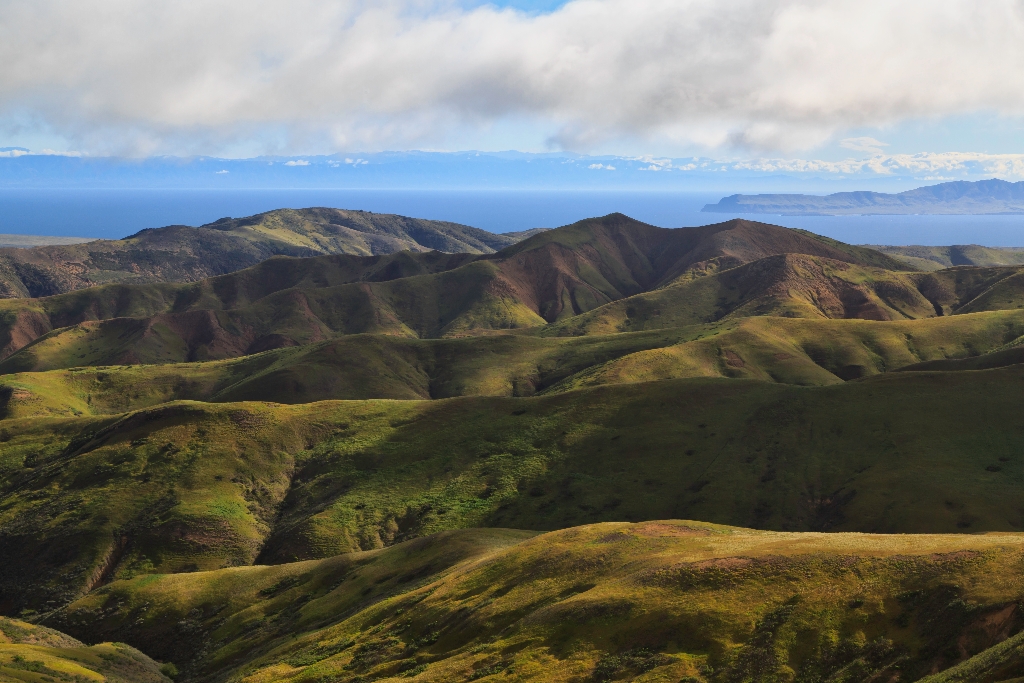
The highest peak (1298 feet) on the northeast side of the island provides stunning views to visitors willing to make the strenuous 8-mile rountrip hike.
Cloud Forest
Fog and wind are ever present on Santa Rosa Island, even more so here on top of Black Mountain. Here the fog condenses on twigs and leaves of island woodland plants, dripping and soaking into the ground. These "cloud forests" harvest the fog and provide a critical source of summer water for wildlife and the ecosystem.
One of the main species of this cloud forest is the endemic island oak, Quercus tomentella. This species was once widespread on the mainland when the climate was warmer and wetter than it is today. Fossil evidence ranges from two to 60 million years, with the oldest fossils found in the Mojave Desert. Today this relict is only found on six islands-Santa Rosa, Santa Cruz, Anacapa, Santa Catalina, San Clemente, and Guadalupe.
Browsing and grazing by nonnative animals in decades past greatly impacted the island oak and native woodlands, changing the fog ecosystem and island hydrology. Now, the US Geological Survey is working with Channel Island National Park and other collaborators to restore the cloud forests of Santa Rosa Island. Research has shown that these efforts have already paid off with the recovery of island woodlands, including young island oaks. As they continue to return, the forests will again harvest water for the island, returning moisture to soils, springs, and streams.
San Miguel Island
If the fog has lifted, you might be able to see San Miguel Island off to the west just three miles away from the western tip of Santa Rosa Island. Once described as a "barren lump of sand" in the 1930s, San Miguel Island is now densely vegetated with a diverse assemblage of native plants. Native vegetation has recovered remarkably well on San Miguel Island since the removal of sheep in the 1950s.
Is there something we missed for this itinerary?
Itineraries across USA


















































